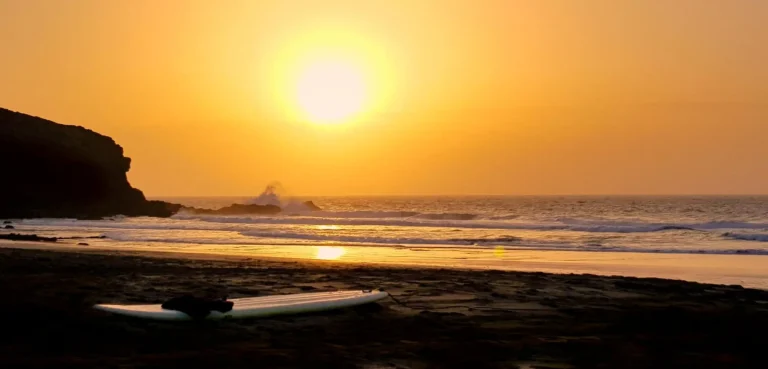
7 Fuerteventura Top Beaches You Can’t Miss
From the golden sand of Playa de Sotavento to the black rocks of la Pared, here are the 7 Fuerteventura top beaches and the map to find them!

Fuerteventura is part of the Canary Islands group in Spain and is the land of wind in your hair, surfing, volcanic soil and wild beaches. This island lends itself to exploration and offers so many incredible sights, from beaches with white sand dunes to those embedded in black lava stone cliffs, from villages like Corralejo to the mountains inland.
Is it possible to organise a DIY trip to Fuerteventura? Of course it is! In this article we provide you with our list of ‘8 Fuerteventura travel tips’ to make the most of your holiday on the windy island!
Fuerteventura is a great island for all kinds of people. If you like water sports, you’ll love it. And if you’re looking for a bit of rest and relaxation on the beach, you’ll find that too. There’s a huge variety of places to see on this island. The east and west coasts are quite different. The former has clear, easily accessible sandy beaches, while the latter is characterised by black cliffs overhanging the sea. In the countryside around Fuerteventura, you can go on long walks and trekking trips until you reach lookout points by lighthouses or mountains that offer incredible views of the island.
We highly recommend a DIY trip to Fuerteventura as it’s a great way to get a full experience of the island. Planning a DIY travel to Fuerteventura is really straightforward, and in this article we’ve put together our top Fuerteventura tips for DIY travel to help you set out to discover this beautiful island!
If you’re planning a trip to Fuerteventura, here are some tips for getting there.
The island’s airport is located on the east coast, south of the village Puerto del Rosario, where the island’s port is located. If you’re planning a DIY trip to Fuerteventura, you can choose from one of the low-cost airlines that fly directly to the island from a few European cities, including London and Milan. Some of the airlines you can choose from are Ryanair, Vueling and Easyjet.
You can also fly with other national airlines to Fuerteventura airport. These include Qatar Airways (with a stopover in Madrid or Barcelona), American Airlines and British Airways (both with a stopover in Madrid).
If you’re coming from Europe or Italy, the quickest way to get to Fuerteventura is with a direct, low-cost flight. It takes about five hours to get from Italy, depending on which airport you leave from.
Flying with a low-cost airline costs about €150 on average, but it can be more than €500 depending on when you fly. We recommend booking your flight well in advance and, if you can, flying on a weekday because the prices are lower than on weekends.
If you’re planning a DIY trip to Fuerteventura, we recommend hiring a car to get around the island’s interior for a few reasons:
If you’re looking to rent a car, we suggest Cicar. They’re a local Canary Island car rental company with an office at Fuerteventura airport. They offer great value for money rentals and don’t require a security deposit. Prices start at around €25 per day for a small car like a Fiat 500 and around €35 for an SUV.
The main road in Fuerteventura follows the east coast of the island and starts in Corralejo and goes all the way to Las Gaviotas. There is no coastal road along the west coast, but to get there you have to drive inland through the island and then turn off towards the coast. The roads in Fuerteventura are well maintained and directions are clear everywhere. However, some stretches of road, especially inland roads, are not illuminated.

Roads in Fuerteventura
The Canary Islands enjoy an enviable location, as, although they are European, they face the southern part of Morocco and enjoy a typically African climate, mitigated by the currents of the Atlantic Ocean.
This means that summers are not too hot and winters are not too cold! In particular, in summer, maximum temperatures never exceed 30 °C and in winter they are around 20 °C. Rainfall is practically absent all year round, so much so that the island has a typically desert-like appearance.
Obviously, if you want to enjoy the beach life, we advise against going there in winter, in the months from December to March. Instead, intermediate months such as May and October are ideal, as the temperatures are still high and will allow you to enjoy the sun on the beach and there are not many tourists, so your do-it-yourself trip to Fuerteventura could be very cheap!
The high season coincides with the summer months of July and August, so some areas, especially those in the north near El Cotillo and Corralejo may be crowded.
In order to be able to visit the whole island, we recommend you make a DIY Fuerteventura trip itinerant, planning to visit different places during the days of your holiday. If you are of this idea, we recommend booking accommodation in the south of the island and one in the north, as we did on our DIY travel to Fuerteventura.
In particular, as far as the southern part of Fuerteventura is concerned, we recommend the Costa Calma area, where various hotels, residences and flats can be found. In the Costa Calma area you will find some of the most beautiful beaches in Fuerteventura, such as those near Jandia, and there are several shops, bars and restaurants in the village, as well as supermarkets where you can buy everything you need. From here, it will be quite quick to reach some of the most attractive areas inland and on the west coast, such as the Jandia Natural Park, where you can go trekking, and the famous Cofete beach.
Instead, in the northern part of Fuerteventura is the village of Corralejo, where we booked our second accommodation. In Corralejo the choice is vast, from resorts to flats to B&Bs you will not struggle to find something that suits you.
Staying in Corralejo has the advantage of being close to the most famous beaches in Fuerteventura, such as La Concha beach and the more famous Dunas de Corralejo beach, within the Corralejo Natural Park. Furthermore, in the evenings you can enjoy the Spanish movida in the streets of the town centre, where you will find plenty of clubs, restaurants and shops.
The cost of accommodations in Fuerteventura is not high compared to other beach destinations: a flat in a residence in high season costs around 100 € per night.
The cuisine of Fuerteventura is typically Spanish, but also rich in freshly caught fish!
In taverns and bars near the beaches you will always find grilled fish on the menu accompanied by a side dish, great for a light lunch.
As for dinners on your do-it-yourself trip to Fuerteventura, we recommend you opt for some typical restaurants offering tapas. Tapas are dishes that are smaller in size and cost less than standard ones and are a great way to sample various dishes.
The aspect we love about this mode is that it makes dining more fun and shared. For example, two people might consider ordering more than 10 tapas to taste together!
There is no shortage of meat in Fuerteventura and we recommend you try a Jamoneria, a typical restaurant where you can sample some excellent jamon iberico.
As for breakfast, you will find an offer that ranges from sweet to savoury but the typical one always includes a ‘tostada’, which is a bruschetta usually accompanied by a tomato sauce (watch out for the garlic!).
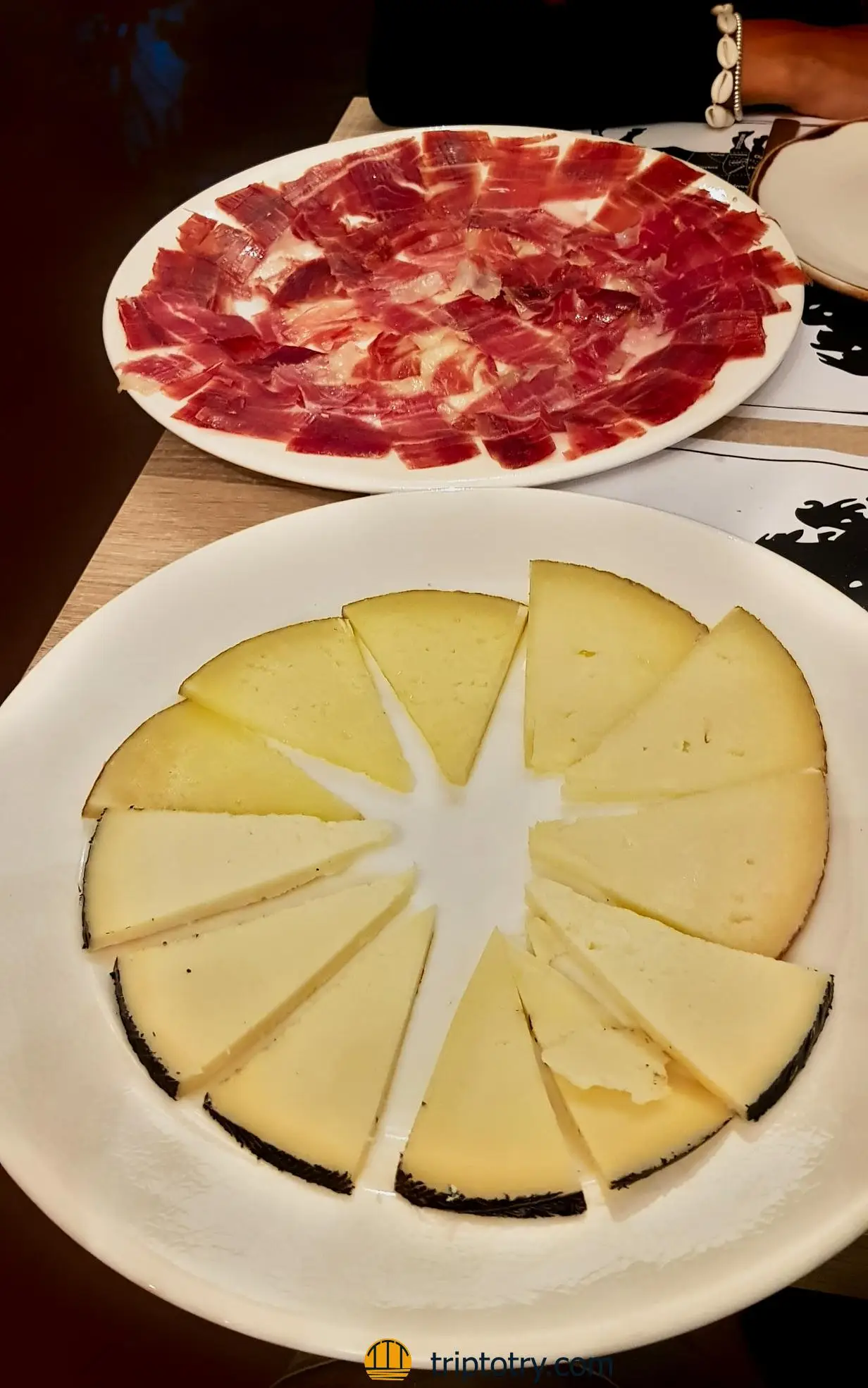
Local cheeses and jamon serrano
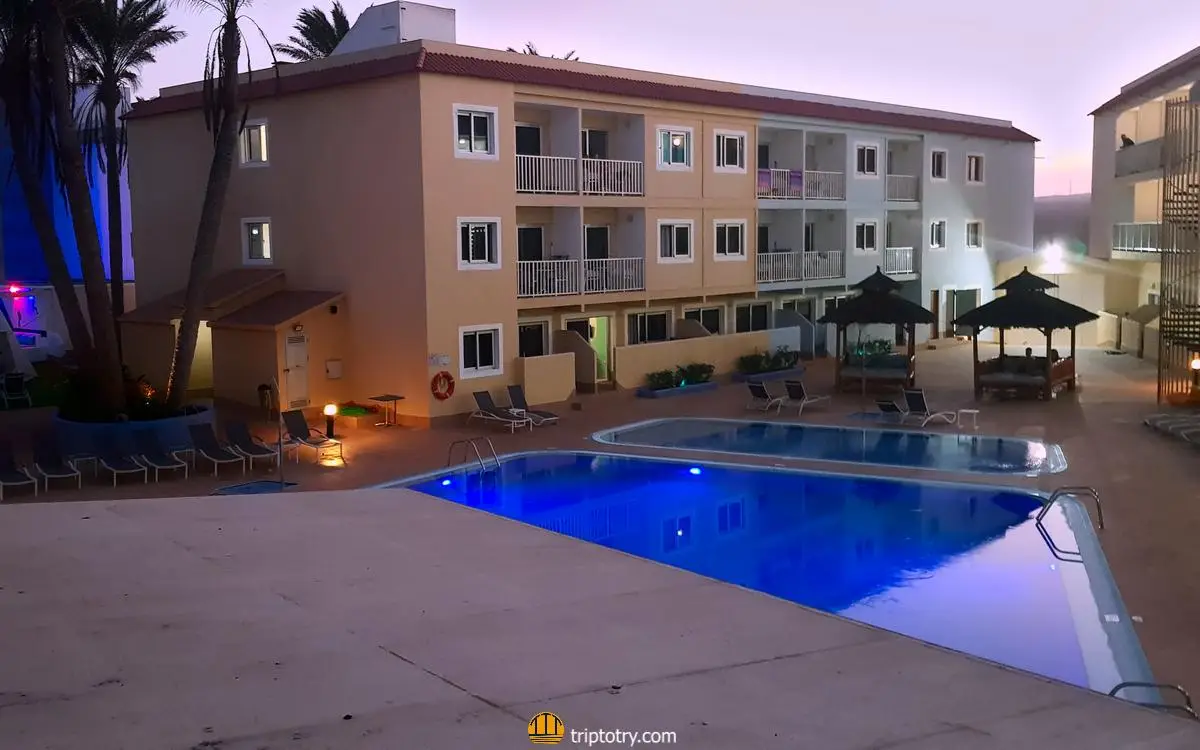
Our accomodation in Correlejo
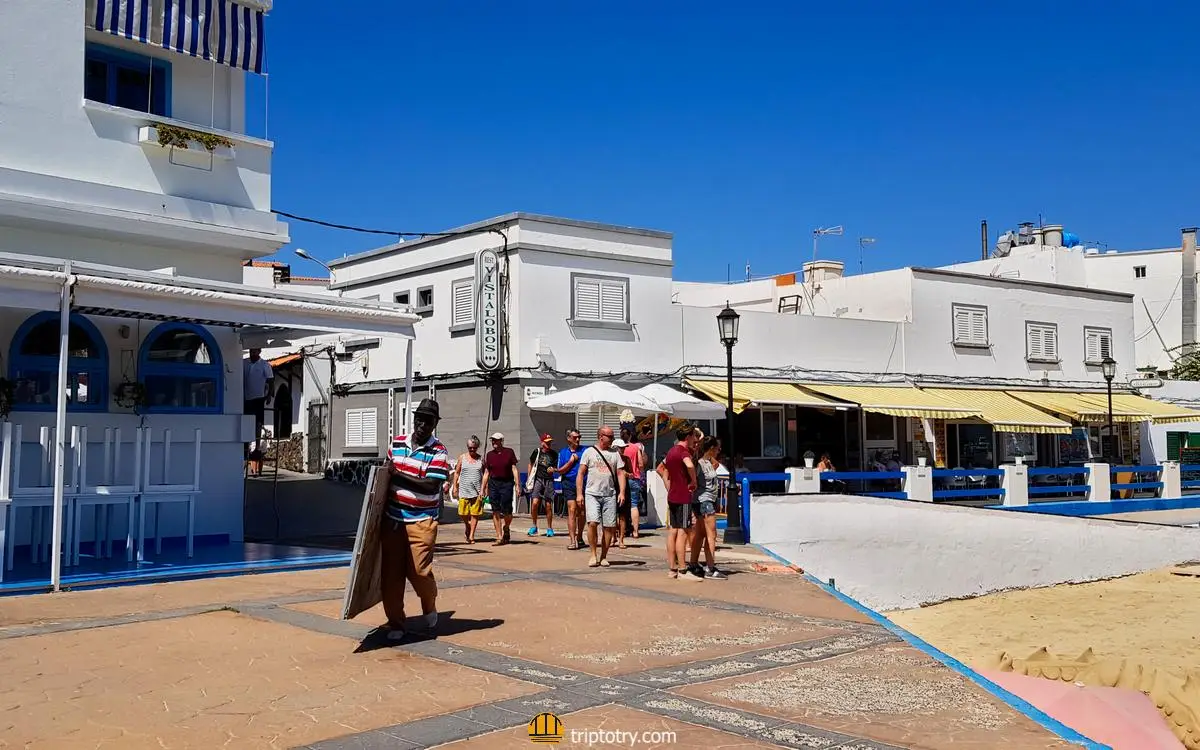
Corralejo
DIY trip to Fuerteventura tips tips: the sea and beaches
The sea in Fuerteventura is everywhere clean and transparent and above all deep blue in colour. Given the location of the island, the water temperature is generally ‘cool’ as there is always a current and during the summer it reaches a maximum of 23 °C.
The beaches of Fuerteventura are extremely varied and we recommend visiting as many of them as possible:
If you want to know more about the beaches of Fuerteventura and where they are located, we recommend you read the article we dedicated to them below!

From the golden sand of Playa de Sotavento to the black rocks of la Pared, here are the 7 Fuerteventura top beaches and the map to find them!
Going to Fuerteventura without trying a surfing lesson would be a real shame! For us, it was the first time we tried to get on a board and ‘ride’ a wave and it was a really fun experience.
Surfing is a sport suitable for everyone and for any age, as the first lessons will be held on beaches where the sea is calm and there are no rocks and the risk of injury from falling into the water is practically zero.
You can book your trial lesson at one of the various surf schools that can be found almost everywhere – there are almost 20 in Corralejo!
A single lesson in a group starts at around €50. If you buy a package of several lessons, the cost is considerably lower: the cost of a 6-lesson package starts at an average of €200.
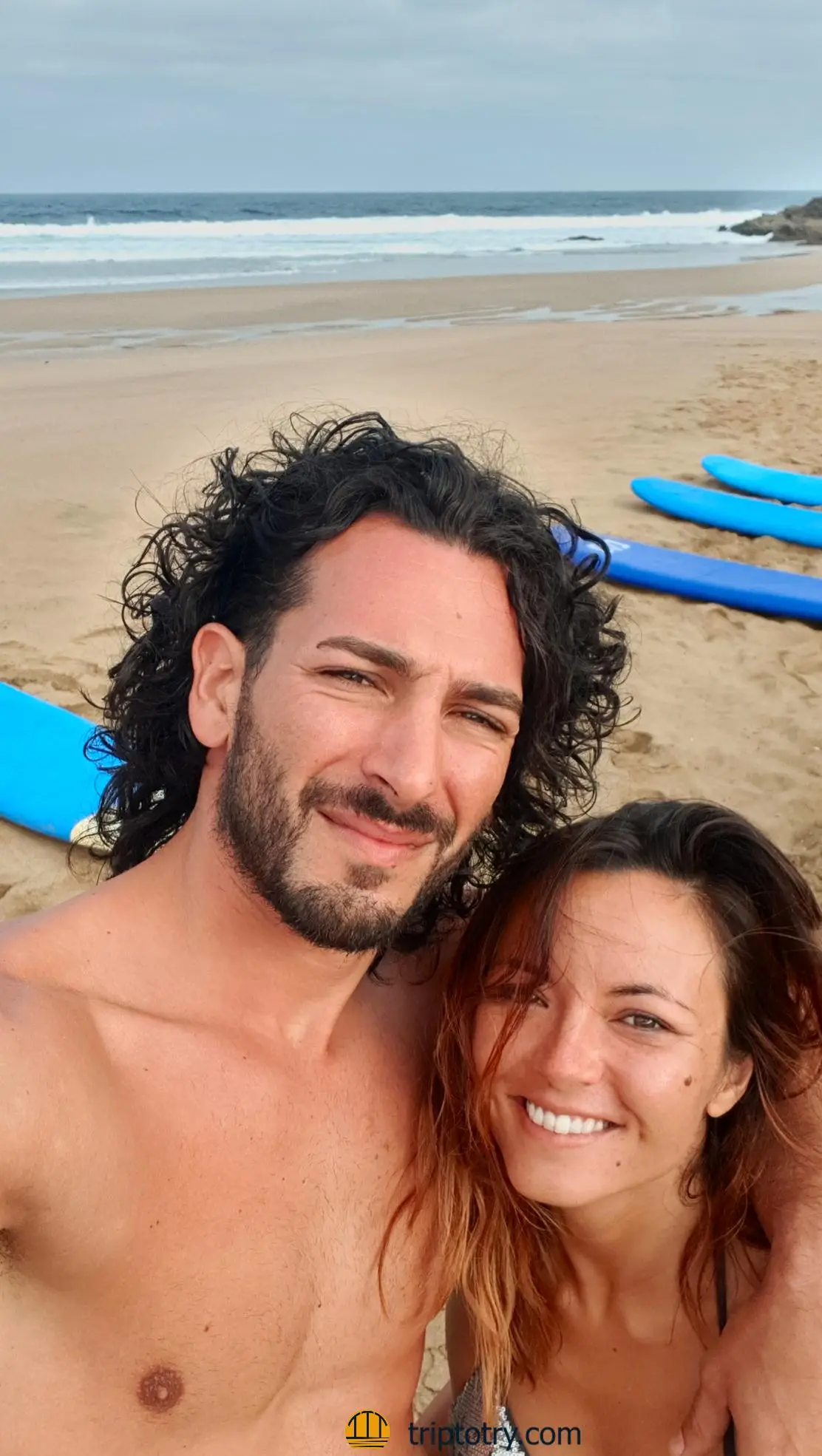
Ready fot surfing lesson!
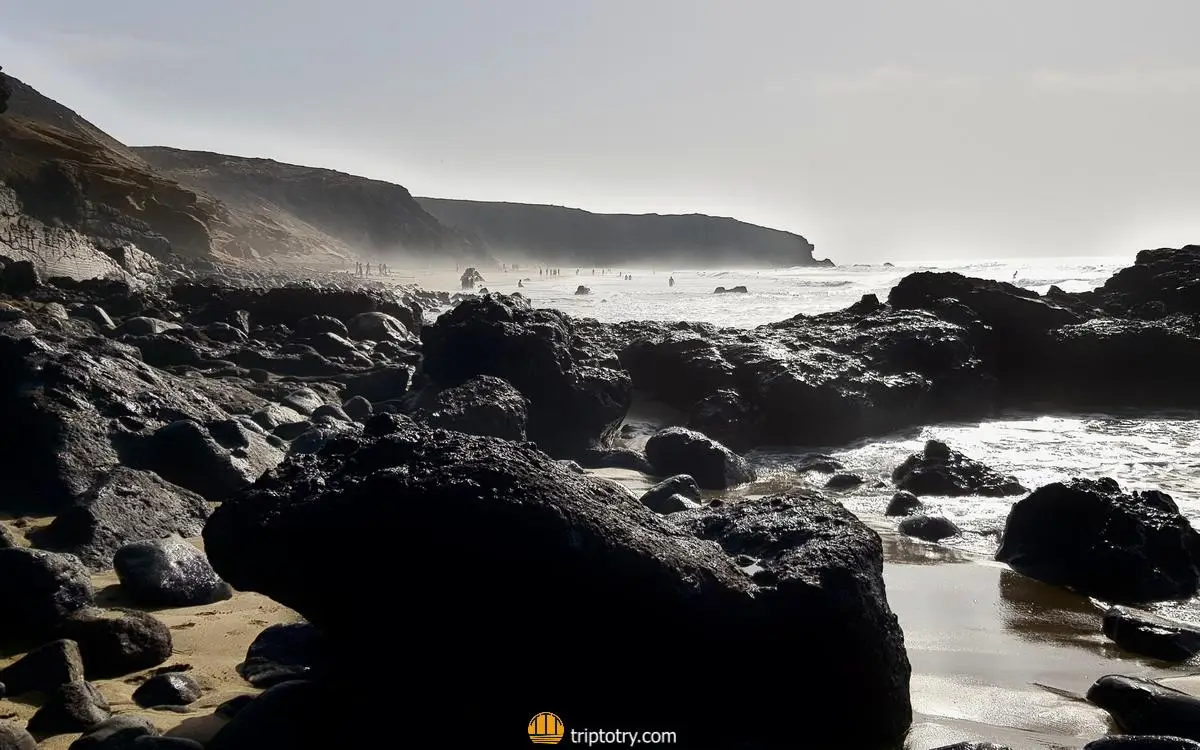
La Pared
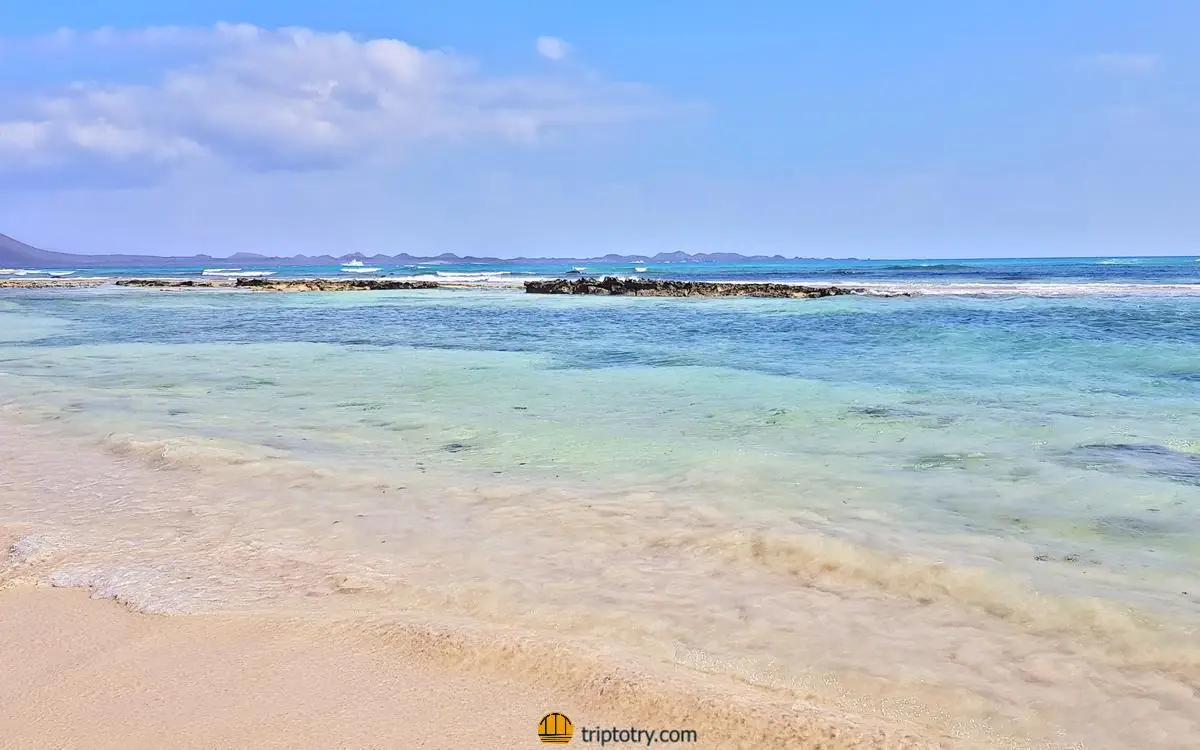
Las Dunas beach in Corralejo
Summing up, what is the cost of a do-it-yourself trip to Fuerteventura?
Taking an example considering two people spending 10 days in high season, changing flats halfway through the holiday, we can give you these approximate costs:
The total is 1,750 € for two people, to which must be added the cost of meals, any surfing lessons, purchase of souvenirs, sunset aperitifs etc.
If you opt for a low season period, such as May and October, the costs are:
for a total of 950 € for two people, to which the costs we have indicated above should be added.
With this article, we hope we have given you some useful information for planning and organising your DIY trip to Fuerteventura! If you have any more curiosities or need more information, don’t hesitate to comment or write us an email, we will be more than happy to answer you! Stay connected with us via social channels and the newsletter and, as always… trip to try!